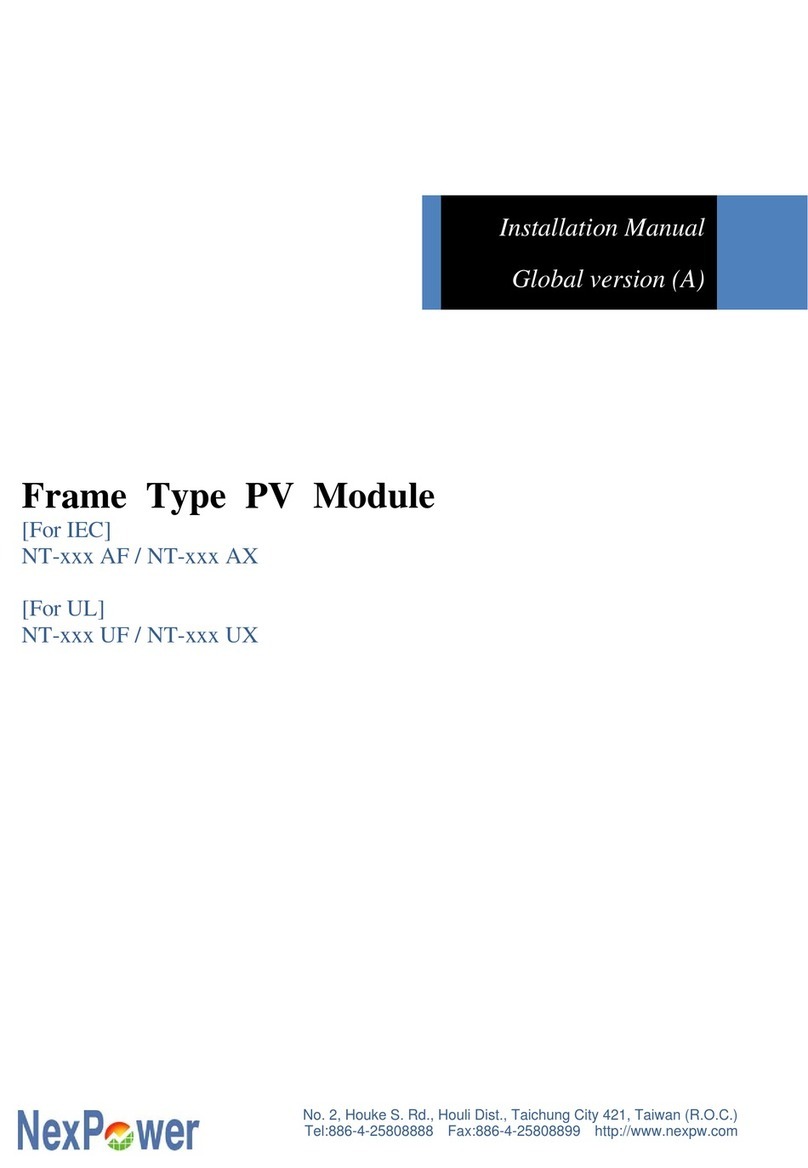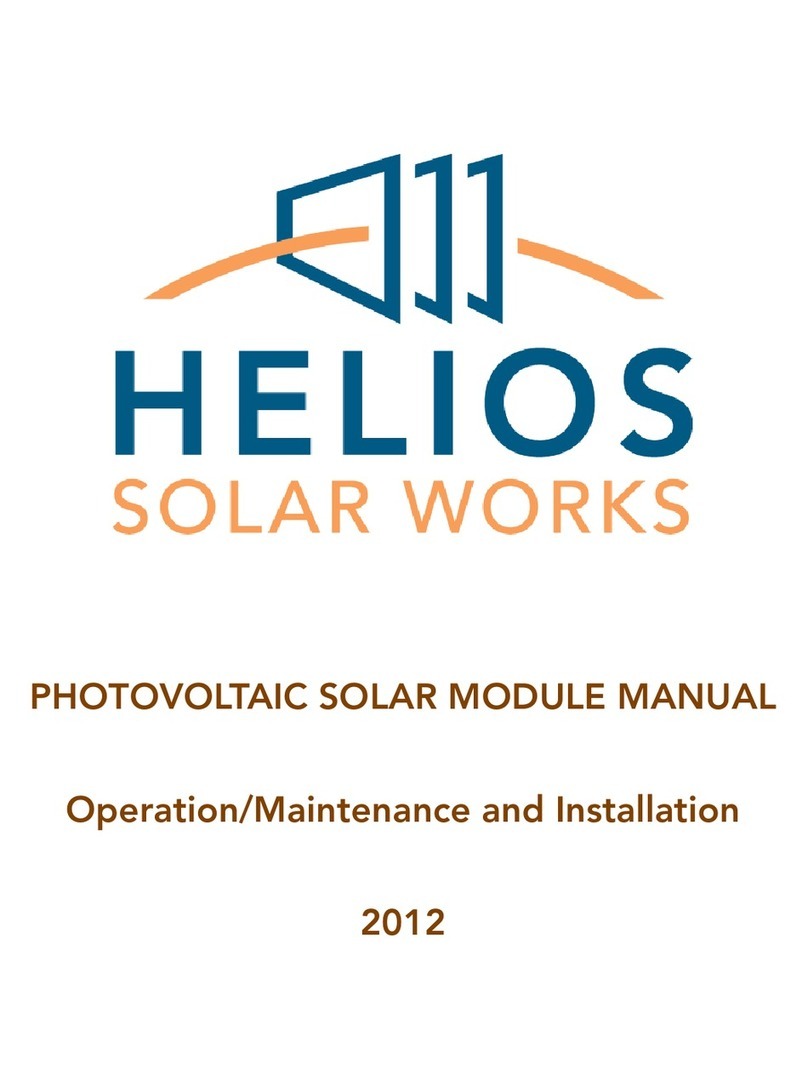STATCON ENERGIAA SEOG Series User manual

Optional two-way IoT access
STATCON
Inspire Innovate Implement
ENERGIAA

1. NOTES ON THE MANUAL ...................................................................................................................3
1.1. SCOPE OF VALIDITY ......................................................................................................................................................3
1.2. SYMBOL INDICATIONS ................................................................................................................................................3
1.3. SAFETY ............................................................................................................................................................................4
2. INTRODUCTION .....................................................................................................................................5
2.1. PRODUCT DESCRIPTION ...........................................................................................................................................5
2.2. PRODUCT NOMENCLATURE...................................................................................................................................... 6
2.3. PHYSICAL APPEARANCE & TERMINATION DETAILS OF INVERTER............................................................ 6
3. INSTALLATION ....................................................................................................................................10
3.0. LOCATION AND PLACEMENT ..................................................................................................................................10
3.1. ELECTRICAL WIRING .................................................................................................................................................12
3.2. ELECTRICAL CONNECTION .....................................................................................................................................13
3.2.1 CONNECTION TO THE BAT TERY ................................................................................................................................................................13
3.2.2 CONNECTION TO AC SUPPLY IN ..............................................................................................................................................................13
3.2.3 CONNECTION OF SOLAR MODULES (P V): SOLAR IN ..................................................................................................................13
3.2.4 CONNECTION OF LOAD: LOAD OUT .......................................................................................................................................................13
3.3 INSTRUCTION TO FOLLOW ........................................................................................................................................ 13
3.4 EARTHING ...................................................................................................................................................................... 14
3.5 STARTING UP THE PCU ............................................................................................................................................. 14
4. DISPLAY ................................................................................................................................................. 15
4.1 DISPLAY OVERVIEW ..................................................................................................................................................... 15
4.2 DISPLAY PARAMETERS .............................................................................................................................................. 15
4.3 MENU SETTINGS .......................................................................................................................................................... 16
4.4 LED INDICATIONS ........................................................................................................................................................ 16
4.5 MENU SETTING FLOW CHART .................................................................................................................................. 17
4.6 FAULT ANALYSIS ........................................................................................................................................................ 18
Contents
Copyright Declaration.........................................................................................................................................................2
2.4. FEATURES ..................................................................................................................................................................... 9
1 of 30

5.2 WORKING OF SYSTEM............... ................................................................................................................................ 20
5.3 LOAD CHART & BATTERY SIZING ........................................................................................................................... 21
6. MAINTENANCE & TROUBLESHOOTING ......................................................................................22
6.1 VISUAL INSPECTION........................ ........................................................................................................................... 22
6.1.1 CLEANING THE INVERTER EXTERNALLY ........................................................................................................... 22
6.1.2 BATTERY MAINTENANCE........................................................................................................................................ 22
6.1.3 PV MAINTENANCE......................................... ........................................................................................................... 22
6.2 TROUBLESHOOTING........................................ ........................................................................................................... 22
APPENDIX-1............................................................................................................................................. 25
GENERAL FAULTS AND THEIR SOLUTIONS... ........................................................................................................... 25
A. INVERTER OUTPUT VOLTAGE IS NOT AVAILABLE .......................................................................................... 25
B. SOLAR CHARGING IS NOT AVAILABLE............................................................................................................... 25
C. MAINS CHARGING IS NOT HAPPENING.............................................................................................................. 25
D. OUTPUT FLUCTUATION............................................................................................................................................. 25
APPENDIX-2............................................................................................................................................ 26
TECHNICAL SPECIFICATION -LOW VOLTAGE 1-8KVA............................................................................................. 26
APPENDIX-3............................................................................................................................................ 28
WARRANTY........................................................................................................................................................................... 28
APPENDIX-4............................................................................................................................................ 30
SERVICE AND CUSTOMER CARE................................................................................................................................... 30
2 of 30
Copyright Declaration
The copyright of this manual exclusively belongs to STATCON ENERGIAA PVT. LTD. Any corporation of individual
should not plagiarize, partially copy or fully copy (including software, etc.) it. Reproduction or distribution of it any
from or by any means is not permitted. All rights reserved. STATCON ENERGIAA PVT. LTD. Reserves the right of
final interpretation. This document is subject to changes without prior notice. This is valid only for SEOG MPPT-
based PCUs and not for custom built ratings.
TECHNICAL SPECIFICATION -HIGH VOLTAGE 5-15KVA.......................................................................................... 27
5. OPERATING MODES AND LOAD CHART ..................................................................................... 19
5.1 DETAILS OF PRIORITY MODES ................................................................................................................................ 19

1. NOTES ON THE MANUAL
This manual is an integral part of inverter, and it describe the assembly, installation, commissioning,
maintenance and failure analysis/ troubleshooting of SEOG MPPT-Based PCU. List of inverters for
which this operation manual is valid have been mentioned in the below list. This manual is not
applicable for customized built ratings provided in writing by Statcon Energiaa Pvt. Ltd. (hence for the
‘SEPL’ or the company’).
Sr. No.
Model
Sr. No.
Model
1
SEOG-024-1K0-1P
10
SEOG-096-5K0-1P
2
SEOG-048-1K0-1P
11
SEOG-096-6K0-1P
3
SEOG-048-2K0-1P
12
SEOG-096-7K5-1P
4
SEOG-048-3K0-1P
13
SEOG-096-8K0-1P
5
SEOG-048-4K0-1P
14
SEOG-120-5K0-1P
6
SEOG-096-4K0-1P
15
SEOG-120-8K0-1P
7
SEOG-048-5K0-1P
16
SEOG-120-10K0-1P
8
SEOGT-048-6K0-1P
17
SEOG-120-12K5-1P
9
SEOG-048-8K0-1P
18
SEOG-240-15K0-1P
NOTE : This manual may be applicable for other models as well on selective basis. In case your model
of inverter is not mentioned in the above list, please contact manufacturer before using this manual.
Table 1
Keep this manual close to the machine where it is easily accessible for the operator / end-user.
DANGER INDICATES A HAZARDOUS
SITUATION WHICH, IF AVOIDED, WILL
RESULT IN DEATH OR SERIOUS
INJURY.
WARNING! ELECTRICAL SHOCK
HAZARD. NO USER SERVICEABLE
PARTS INSIDE. REFER SERVICING TO
QUALIFIED SERVICE PERSONNEL.
DA N G E R E L E C T R I C A L
HAZARD. TURN OFF POWER
BEFORE SERVICING.
RISK OF FIRE
3 of 30
1.1 SCOPE OF VALIDITY
1.2 SYMBOL INDICATIONS:

1.3.4 PACKAGED CONTENTS:
Installation. maintenance & repair should be done by authorised, trained & experienced personnel
only.
Disconnect the battery, grid, solar panel & load before any service on the inverter to avoid
electrocution.
To disconnect the inverter, turn off the MCBs/Switch/Terminals on the PCU & remove the battery
fuse holder.
Use the PCU according to our instructions for operation.
Metal bracelets, rings and other metal objects should be removed before touching the PCU to avoid
contact with electricity carrying items.
Dispose the battery through the Govt-approved agencies only, as it contains lead and other harmful
chemicals.
Ensure that the unit is out of reach of small children who may be exposed to serious injuries
otherwise.
Do not place inverter/ battery in the environment of heating vents, near the radiations or other
source of heat.
1.3.1 GENERAL SAFETY RULES:
1.3.2 PRECAUTIONS DURING INSTALLATION & REPAIR:
1.3.3 PRODUCT SAFEGUARDING:
Grounding of PCU & Panel should be done prior to connecting power.
Before installation disconnect PV & Grid as they may start automatically under certain conditions.
Baking powder neutralizes battery acid electrolyte. Always keep some handy.
For disconnecting the battery first remove the negative terminal to avoid the spark.
High voltage is present at the battery terminals even after the inverter is shut down.
Before working on the unit always be assured the charge is discharged completely.
Be careful while working with metal tools to avoid short circuit.
PCU should be placed in accordance with the given instructions:
Routine checks should be carried out to monitor the system health.
Keep ventilation holes on the unit always open.
The system works well in areas where temperature does not exceed the range between 0°C to 50°C.
There should be no contact of the inside of the PCU with liquid of any kind as it may results in
a shorting of the circuit.
Dust free areas are preferred otherwise the performance may deteriorate over time resulting in a
system failure, lightning, rain and adverse conditions.
PCU
Product Manual
Spare Fuse (optional)
Figure 1
4 of 30
1.3 SAFETY
MANUAL
PCU FUSE

5 of 30
2. INTRODUCTION
The SEOG MPPT-Based PCUs are mechanically and electrically robust with a operating range and suitable for
operating in harsh environments. This unit is perfectly fit for low-maintenance for industrial and residential
applications both.
A typical block diagram is shown in Figure 2 involving the integration of SOLAR, GRID, BATTERY and GENSETS
with the site loads. its inbuilt Intelligence manages all the sources selectively to provide seamless power to the
loads so as to incur minimum bills with optimum utilization.
2.1 PRODUCT DESCRIPTION
Congratulations on being a part of the Indian solar revolution and buying a product that helps in sustainable
development, guarantees peace of mind and, more importantly, cuts a major portion of your electricity bill!
The solar Power Conditioning Unit (PCU) gives you the most savings through Solar PV + Battery + Mains.
Kindly visit to know more about our product range. Custom built ratings of inverter are also www.energiaa.in
available on request and can be designed as per user requirements.
Figure 2

6 of 30
2.2 PRODUCT NOMENCLATURE
Note : Above nomenclature shall be valid only for SEOG MPPT-Based Power Conditioning Unit.
Note : Please note that the dimensions, enclosure type, colour shade and cable entry can be changed by the
manufacturer without prior notice, owing to technological innovation.
2.3 PHYSICAL APPEARANCE & TERMINATION DETAILS OF INVERTER
SEOG MPPT-Based PCU comes in sheet metal enclosure of standard sizes and colour shades depending upon the
size of the machine. Any machine can be either Tower type or Table top type depending upon its capacity. All the
units are for Indoor application only and should not be kept in open.
All the wire connections to unit are made from the bottom end at rear side. The terminology and sequence of
terminals have been kept the same for as many models as possible for ease of understanding and has been
explained below in detail.
The below chart brings out all the variants available in terms of dimensions and capacity of the machine.
SR.
NO.
RATING
DIMENSIONS
(W X D X H)
ENCLOSURE
TYPE
COLOUR
SHADE
VIEWS
1
0.5-1 KVA Single Phase PCU
450 X 360 X 200
TABLE TYPE
GREEN/WHITE
Figure 4
2
2-4 KVA Single Phase PCU
275 X 611 X 448.5
TOWER TYPE
GREEN/WHITE
Figure 5
3
5-6 KVA Single Phase PCU
400 X 753.5 X 650
TOWER TYPE
GREEN/WHITE
Figure 6
4
5-8 KVA Single Phase PCU
400 X 753.5 X 650
TOWER TYPE
BLACK
Figure 7
5
10 KVA Single Phase PCU
450 X 753.5 X 650
TOWER TYPE
BLACK
Figure 7
6
15 KVA Single Phase PCU
590 X 450 X 734
TOWER TYPE
BLACK
Figure 8
Table 2
Figure 3

7 of 30
2.3.1 SEOG - TABLE TOP TYPE MODEL : 0.5-1 KVA/24V/48V MPPT-Based PCU
Figure 4
FRONT VIEW
REAR VIEW
2.3.2 SEOG - TOWER TYPE MODEL : 2-4 KVA/48V MPPT-Based PCU
Figure 5
FRONT VIEW REAR VIEW

8 of 30
2.3.3 SEOG - TABLE TOP TYPE MODEL : 5-6 KVA/48V MPPT-Based PCU
Figure 6
FRONT VIEW
REAR VIEW
2.3.4 SEOG - TOWER TYPE MODEL : 10KVA/96/120V MPPT-Based PCU
Figure 7
FRONT VIEW REAR VIEW

9 of 30
2.3.5 SEOG - TABLE TOP TYPE MODEL : 15KVA/240V MPPT-Based PCU
Figure 8
FRONT VIEW REAR VIEW
2.4 FEATURES
SEOG series PCU’s provide a complete solution for 230V AC, 50Hz power requirements. This series PCUs are
rich in the following features:
2.4.1 5 MODE PRIORITY SELECTION AS PER USER REQUIREMENT
MODE-1 : Solar > Grid > Battery*
MODE-2 : Solar > Grid > Battery
MODE-3 : Solar > Battery > Grid
MODE-4 : Solar > Grid > Battery**
MODE-5 : Grid > Solar > Battery
2.4.2 MONITORING
Largest LCD display in its class for great visuals
Inbuilt data logging capability up to 5 years (optional)
RS 232/RS 485, GPRS, remote monitoring available (optional)
2.4.3 INDUSTRIAL GRADE INVERTER
Designed for reliability against frequent grid variations
Our Transformer provides galvanic isolation & has a long life
Protective breakers at all inputs and outputs
2.4.4 PLUG IN PLAY
Designed for screw-type/ pin type terminal blocks for all input and output
Ideal for solar integrators due to ease of installation
Designed for hassle free commissioning
Note: Refer the OPERATING MODES AND LOAD CHART for details (Table 5)-Page No.-19

10 of 30
3. INSTALLATION
3.0 LOCATION AND PLACEMENT
3.0.1 PCU
The Inverter should be placed in accordance with the following:
Unpack PCU completely then unwrap the stretch film from PCU.
In a well-ventilated room.
Placed on a raised platform for better insulation from the ground, protection from water, and so on.
Gas cylinders, spray and other inflammable items should not be placed near it.
Should not be placed in direct sunlight, near running water or at excessively humid location.
In case the system is not going to be installed immediately, it must be stored carefully in vertical
position, as indicated on the packing and stored in a dry and sheltered room. Cover it with an
envelope (paper/light material cover) so that it is protected from dust.
If the inverter installation is over 6 months, be sure to charge batteries for at least 8 hours before
the first use.
3.0.2 BATTERY
Battery should be placed on a 3”(inch) ramp above from ground.
Battery bank terminals should always be insulated to avoid and electrical shock.
Batteries should preferably be placed in a separate room to avoid acidic fumes.
Length of cable from battery to PCU should be kept to minimum to avoid the losses. Cable sizing
should also be done keeping in mind to minimum the losses.
3.0.3 PV
Place the solar panels (PV) in the direction of maximum duration time of sun.
There should not be shadow of any object on the panel.
Should be placed at sufficient height.
Panel should be fixed properly.
Since India is located in northern hemisphere so solar panel’s face should true south direction.
Solar panel tilt angle lies between 10°-30° but it should be determined according to the latitude of
your position.
3.0.4 SURGE PROTECTION DEVICE (SPD)
Surge Protection are a part of plant installations and hence, should be installed in addition to
protection offered in PCU. Type and size surge protections vary from site to site and adequate
consultation should be done with a subject matter expert before selection of SPD.
Apart from SPD in AJB used for solar protection, additional SPD is recommended before PCU inside
the room.
Suitable SPD on AC side (both Grid and Load) is mandatory inside the room before PCU to avoid any
damage to it caused by surges. A typical such schematic drawing can be seen in figure below for
single phase PCU. An installer may contact some expert and use alternate scheme similar to this
reliable working of PCU and site.
See the image below on next page:

This image shows a typical single-line diagram showing use of SPD and earth connection there of.
11 of 30

12 of 30
Figure 9
3.1 ELECTRICAL WIRING
WIRING AND THIMBLE/LUG SIZE CHART AS PER IS-3961-PART V
*THIMBLE/LUG DIA AT SCREW SIDE IS 6.2 MM. THIMBLE/LUG size should be same as wire size given
below.
Table 3
ENSURE THAT ALL THE MCB’s ARE IN OFF POSITION BEFORE STARTING THE CONNECTION.
L
N
N
L
Load
AC Mains
Battery
PV

3.2 ELECTRICAL CONNECTIONS
Connect the +ve terminal of the battery to the ‘BATT+’ terminal of PCU.
Connect the -ve terminal of the battery to the ‘BATT-’ terminal of PCU.
Keep wire to be of minimum possible length.
Follow the wire size and lug details as per given in Table 3.
BEFORE CONNECTING BATTERY WIRES MAKE SURE THAT ALL MCB’s ARE IN OFF POSITION.
3.2.1 CONNECTION TO THE BATTERY
Use a 2-core cable for connection of load to PCU.
The AC Mains must be connected to the screw/plug type terminals of AC Mains of PCU.
Connect the Phase wire of the AC Mains to the ‘L’ terminal of PCU.
Connect the Neutral wire of the AC Mains to the ‘N’ terminal of PCU.
Follow the wire size and lug details as per given in Table 3.
3.2.2 CONNECTION TO AC SUPPLY IN
The PV output must be connected to the ‘PV’ screw terminals of PCU.
Connect the +ve terminal of the PV output to the ‘PV+’ terminal of PCU.
Connect the -ve terminal of the PV output to the ‘PV-’ terminal of PCU.
Follow the wire size and lug details as per given in Table 3.
3.2.3 CONNECTION OF SOLAR MODULES (PV) : SOLAR IN
Use a 2-core cable for connection of load to PCU.
The AC load must be connected to Load terminals of PCU.
Connect the Phase wire of the Load to the ‘L’ terminal of PCU.
Connect the Neutral wire of the Load to the ‘N’ terminal of PCU.
Follow the wire size and lug details as per given in Table 3.
3.2.4 CONNECTION OF LOAD : LOAD OUT
3.3 INSTRUCTION TO FOLLOW
Charge the batteries before first use.
MCBs on the inverter should be OFF during connecting wires to the PCU.
Use thimbles for proper connection of wire at screw terminals
Figure 10
Figure 11
PCU
MAINS
I/P
O/P
STABILIZER/
CVT/SERVO
STABILIZER/
CVT/SERVO
NOTE:
DO NOT USE
STABILIZER/
CVT/SERVO
AT OUTPUT
OF PCU.
13 of 30
✓✕

14 of 30
3.4 EARTHING
Earthing of any equipment is required to ensure that the chassis of the equipment is at ground
potential and the user does not experience any shock in case of contact.
For SPDs to operate and protect the equipment against lightning, earthing is mandatory.
Quality of earting and related values are important for adequate protection and vary from site to site,
and equipment to equipment.
Earthing kit contains rod and clay-salt mixture.
For earthing, dig a 4-5 feet hole in ground and put the rod with mixture and water.
Connect the earth wire from house to clamp.
It is advisable to have a proper earthing near your house or solare panels.
Please ensure that earth connection of SPD as per section 3.0.4 above is as drawing.
3.5 STARTING UP THE PCU
Check all the connections twice before starting the PCU.
Ensure that:
Battery terminals (+ve to +ve & -ve to -ve) are connected tightly and properly.
Load is connected properly.
AC Mains is connected properly.
PV is connected properly.
Check the polarity correct.
After checking all the connections, Switch on the Battery MCB first.
After switching on the MCB, the display is switched ON.
Now switch ON all the MCB’s : AC Mains MCB, Load MCB and PV MCB.
Now press the power button given below the display for a few seconds till the green LED comes ON.
Your PCU will start now.

15 of 30
4. DISPLAY
4.0 DISPLAY OVERVIEW
The Flow diagram of home display on the page shows the basis navigation of the display panel
through the buttons provided : namely INC, DEC, SET, ENTER.
The display automatically scrolls the parameters after the unit is switched ON.
Various parameters are displayed one after the other with a 5 second time period for each and 10
second delay for TIME and DATE.
Press “INC” key to see each parameter manually and now each parameter can be scrolled through
one by one by pressing INC key successively.
4.1 DISPLAY PARAMETERS
AUTO SCROLL
INC
MANUAL SCROLL
1
2
INC
DEC INVERTER
ON/OFF LED
ON/OFF
SWITCH
DATE
BATT V
TIME
INC INC
INC
BATTERY : Voltage, Charging Current, Discharging Current, Temperature
PV : PV Voltage, PV Current, PV Power, PV Today’s kWH.
INVERTER : Voltage Current, Frequency, Load kVA.
GRID : Voltage, Frequency, Grid kVAh.
Date, Time.
1 1: 10: 17
0 58.0
04:37: 10 0 37.7 0 1.20 8
C
C
C
Figure 12
Disclaimer:- Due to technical innovation LCD display design or look of the PCU system can be changed by manufacturer.
DATE
BATT
V
TIME
kW h
PV
PV
05.8
BATT
A
0 37.0
0 47.8
BATT
BATT
V
2 30.0
INV V
A
10.
INV
6
kVA
0.00 0
INV kVAh
00.00 0
INV Hz
50.00
INV
0 33.6
INV
PV
V
230. 1
PV
V
50.0
GRID kVAh
0 00 0
V
PV 1 10.
6
A
PV 10.
6
kW
PV 1.20 8
BATT A INC
BATT TEMP INC
INV V INC
INV A INC
INV kVA INV kVAh
INC
INC
INV Hz
INC
INV TEMP
INC
GRID V
GRID Hz
INC
INC
INC
GRID kVAh INC
PV V INC
PV A INC
PV kW
PV kWh
INC
3
4
5
6
7
8
910 11 12
13
14
15
16
17
18
19

16 of 30
4.3 MENU SETTING
Long Press key SET to enter MENU setting Mode.
In MENU press key INC successively to go in DATA LOGGING MODE, USER MODE, USER SETTING
MODE, FACTORY SETTING MODE and PARAMETER CALIBRATION MODE. To exit from this mode press
ENTER.
4.3.1 DATA LOGGING MODE
Press key SET to enter in data mode when displayed on scree.
Press key SET to see days unit generation (KWh) day wise data.
Press key SET to see monthly unit generation (Kwh) data.
Press key SET to see year wise (Kwh) data.
Press key ENTER to exit this mode.
4.3.3 FACTORY SETTINGS MODE
This mode is password protected. (to be operated only by trained personnel of company).
4.3.4 PARAMETER CALIBRATION MODE
This mode is password protected. (to be operated only by trained personnel of company).
4.3.2 USER SETTING MODE
Press key SET to enter in user mode when displayed on screen.
After entering in user mode it will show software versions.
PC-UEr (XX.X) and dp-UEr (X.X)
After this, it will show rating of your PCU. e.g. 48-4 kVA.
Press key INC to select your battery type (LM/VRLA/NI-CAD). Now press key SET to select battery
capacity (Ah).
Using INC/DEC keys, we can change battery capacity. Now press SET key to choose priority mode
now.
Press key INC/DEC to choose your source priority mode (S>G>B*/S>G>B/G>B>G/S>G>B**/G>S>B).
Press key ENTER to save your settings. It will automatically return to main menu.
4.4 LED INDICATION
POWER GRID
SOLAR
INVERTER
BATT. LOW
FAULT
POWER : This green LED indicates PCU’s control circuitry is power ON.
INVERTER ON : This yellow LED glows when AC load is on INVERTER.
SOLAR ON : This yellow LED glows in steady state - this tells that the solar present and the
charging is completed/stoped. When blinking, it tells the solar is present and the charging is in
process
GRID ON : This yellow LED glows in steady state - this tells that grid is present and the load are
bypassed on GRID supply. When blinking with 1 second interval, it tells that (i)the grid is present, (ii)
the grid charging is in process and , (iii) the load is running on GRID supply. When blinking with a 5
second interval, it means that the GRID supply is available and the loads are running on PV+Battery.
Figure 13

17 of 30
BATT LOW : This red LED glow when your battery is low/discharged. Once Battery voltage falls below
Battery Under Voltage set value; Inverter will shut down and disconnect the load to stop further
discharging of battery. Next, “BATT. LOW” indication will appear on the display. Now Inverter will
again given the O/P to load only when Battery Voltage rises up to more than float voltage set value.
FAULT : This red LED glow if any Fault occurs.
INV ON/OFF : Press and hold button to turn on your PCU, green LED nearby button will start glowing,
which indicates inverter is switched ON.
PRESS AND HOLD BUTTON TO TURN ON YOUR PCU, GREEN LED NEARBY BUTTON WILL START
GLOWING, WHICH INDICATES INVERTER IS SWITCHED ON.
LED OF CHARGING SOURCE WILL KEEP BLINKING DURING CHARGING.
4.5 MENU SETTING FLOW CHART
Figure 14
Disclaimer:- Due to technical innovations LCD display design or look of the PCU system can be changed by manufacturer.
IN USER SETTING MODE BATTERY TYPE, BATTERY CAPACITY & PRIORITY MODE MUST BE CHOSEN
PROPERLY AS PER YOUR REQUIREMENT.
DATA MODE DAY KWH
SET
SET
SETTING
MODE
INC / DEC
LONG PRESS SET
P
DATE
SET
A
F
A
P
L P
MONTHLY KWH
INC
UP
DEC
YEARLY KWH
INC U
DEC
SET
-
P
A
F
AENTER
ENTER
ENTER
EXIT
13: 0
6
: 45 0
6
: 17 2017
SETSET
00 03.54
DATE TIME YEAR
00 03.54 00 03.54
ENTER
EXIT EXIT EXIT
PC -Ue L
U
14 4 INC/DEC
SET
SET
INC
INC
VRLA BATT
LM BATT
NI-CAD
PRIORITY MODE
P
P-UE U LA U
DATE TIME YEAR
48 - 1 1-C A
P
P
E
5-6-
P
INC/DEC
ENTER
ENTER
EXIT
EXIT
SET
SET
U5
FC
F
5 E
F
DATE
5E
F
C AL 1
P

4.6 FAULT ANALYSIS
4.6.1 FAULT / ALARM INDICATION VIA BUZZER
In the PCU system, if any fault/alarm occurs then an audio alarm indication is generated by a buzzer -a
continuous beep sound. By pressing ENTER key after checking the fault type in LED/LCD, buzzer sound gets
deactivated.
4.6.2 FAULT DISPLAY
If any fault occurs in the PCU system, predefined fault no. start display in upper right side of the LCD display
with the FAULT*--- as a prefix with each fault number. The lists of fault name are given in the Table 4 as per
their respective fault number/codes.
FAULT INTERPRETATION
FAULT CODE IN DISPLAY
SYSTEM TRIP
FAULT * 0
INVERTER UNDER VOLTAGE
FAULT * 1
INVERTER OVER VOLTGE
FAULT * 2
BATTERY UNDER VOLTAGE
FAULT * 3
BATTERY OVER VOLTAGE
FAULT * 4
SYSTEM OVER TEMPERATURE
FAULT * 5
BATTERY TEMP. COMPENSATION FAIL
FAULT * 6
SOLAR CHARGE OVERLOAD
FAULT * 7
SOLAR OVER VOLTAGE
FAULT * 8
INVERTER O/P OVER LOAD
FAULT * 9
BATTERY UNDER VOLTAGE ALARM
FAULT * a
MAINS UNDER FREQUENCY
FAULT * b
MAINS OVER FREQUENCY
FAULT * c
SYSTEM O/P SHORT CIRCUIT
FAULT* d
Table 4
18 of 30

19 of 30
5. OPERATING MODES AND LOAD CHART
5.1 DETAILS OF PRIORITY MODES
MODES
MEANING
REASON TO SELECT THIS MODE
MODE-1
S>G>B*
Suitable for the case where customers wants no
battery charging through grid supply. This mode
allows the battery to discharge approx. 40%-50% then
AC loads switch to grid source, if grid supply available.
MODE-2
(default)
S>G>B
This mode allows the battery to discharge approx.
40%-50% then A C loads switch to grid source, if grid
supply available. This mode allows the battery
charging through grid when battery discharge more
than 80%
MODE-3
S>B>G
This mode allows the battery to discharge aprox. 60%-
70% then AC loads switch to grid source, if grid supply
available. This mode allows the battery charging
through grid when battery discharge more than 80%.
MODE-4
S>G>B**
Suitable for areas where grid supply is available only
for 6-8 hours in a day. So, whenever grid available it
charges the battery up-to approx. 80% of its capacity
to make sure to get more battery backup in night time
as compared to above 3 modes.
MODE-5
G>S>B
Suitable for areas when sufficient solar power is not
available for long duration (i.e. in rainy days or where
solar panel non available due to some reason). By
selecting this mode PCU will run like conventional
home inverter.
Note: Above stated battery’s SOC in percentage is estimated (based on Battery Voltage only) but not
actual. This holds true for all percentage mentioned in the table above.
Table 5
Other manuals for SEOG Series
1
Table of contents
Other STATCON ENERGIAA Solar Panel manuals

